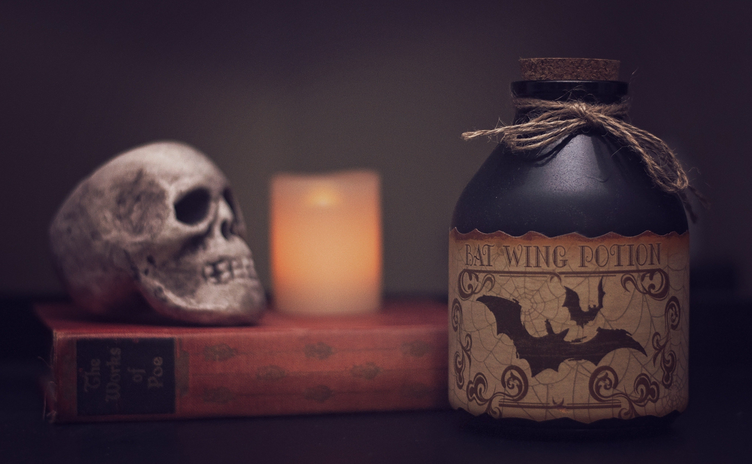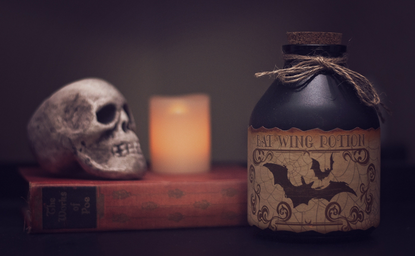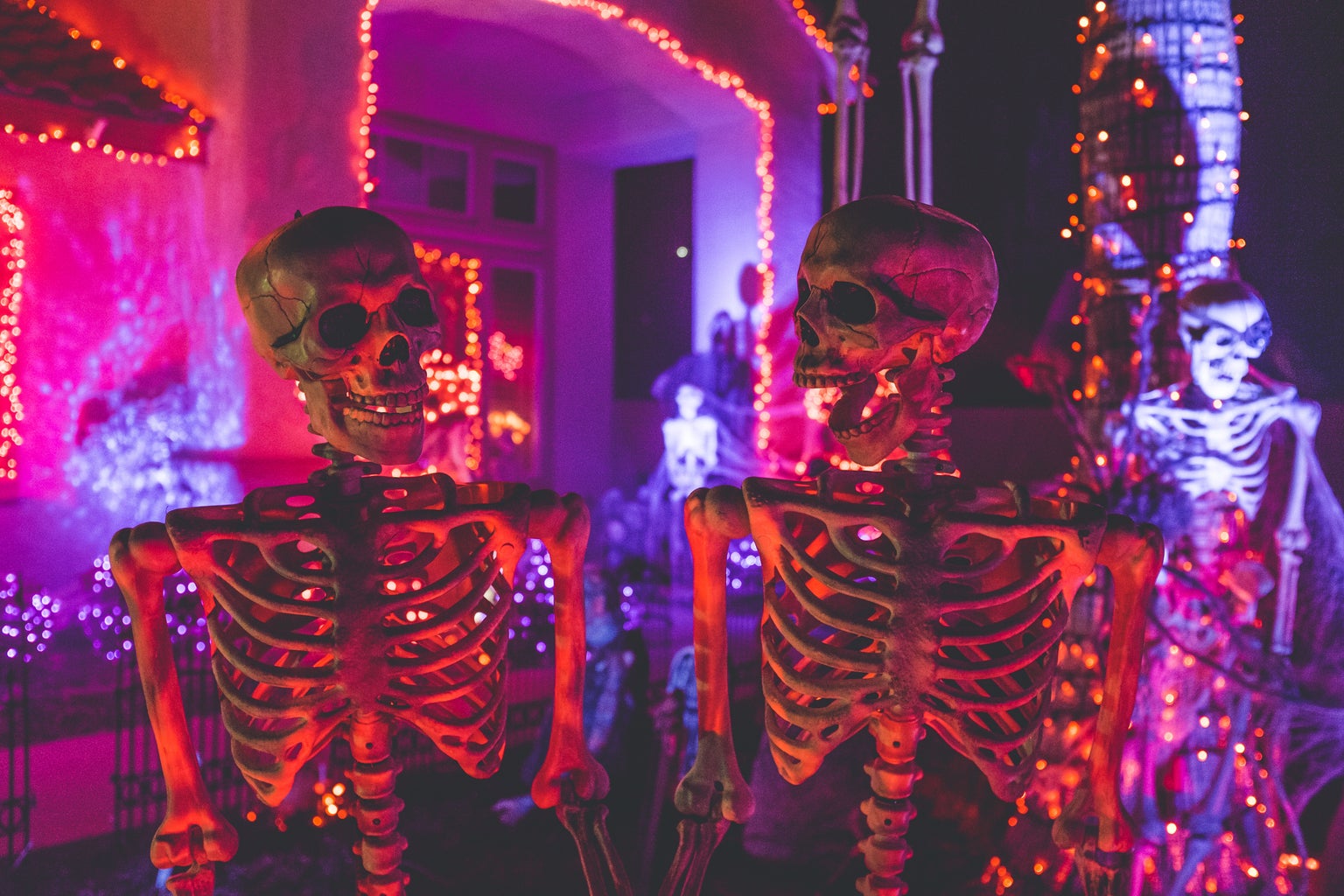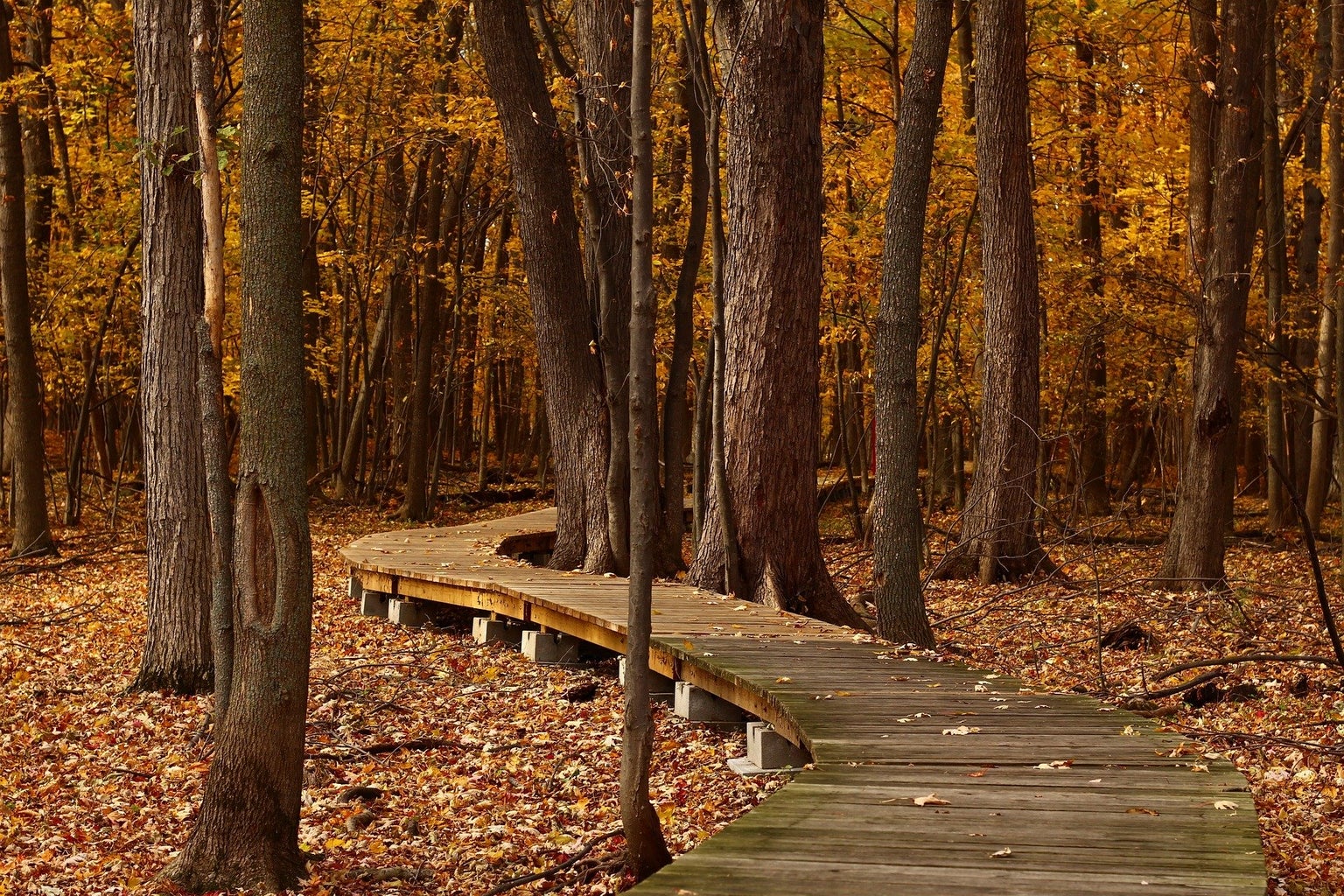In our reality, there is absolutely nothing more beautiful than what connects us – our souls and our bodies, our hopes and our fears. If we think about how much we love our mothers, how their love and warmth is one of the sole contributors to our sanity, and how we love our fathers for their guidance in a world so confusing. This love is the sacred thing that brings us all together, through the starlight of eternity, this pure love families, people and communities share with one another is our key to progress and peace – we simply must remember.
Día de los Muertos (“day of the dead,” in English), celebrated on the first of November, is a tradition that has come from several places to honor the dead and celebrate the life and legacies they left behind on this earth. It has origins in places throughout the world that are, in every other way, different from each other – from old pagan European traditions to honor the dead during the fall solstice, to American indigenous traditions to acknowledge that the souls of the past are never really gone. The Catholic Church, and thus regions where Catholicism is widely practiced, also recognizes “All Saints Day” and “All Souls Day” on the same sacred day of November 1st. All of these cultures and traditions, mixed into one beautiful day of celebration, is something that is so special and worthy of remembering.
There is beauty in the fact that once we are gone, our souls will be remembered for our light and nothing else. Our smiles, our eyes, the way we’ve made others feel. Life is a beautiful celebration, and Día de los Muertos allows us the chance to celebrate life with those who have already experienced it, our ancestors. In the Mexican celebration of this holiday, Aztec traditions of the dead and European traditions of the Church combine to create a colorful party of life. Sugar skull heads, most often seen in association with the day, represent a departed soul and are painted in color and glitter to represent the fullness and beauty of one’s life on their family’s altar. Households that celebrate Día de los Muertos set up altars in the home with pictures of their passed loved ones, setting the intention that their souls are allowed to come in and visit with their living family. For each soul, the family will place food, drinks, and items that this person used to love as a way of saying “we remember you, we love you, and we welcome you back.”
Día de Los Muertos comes from the fusion of Native (mostly Aztec) and Spanish traditions to honor the dead. As a result, November 1st and 2nd of each year are celebrations of life and the unification of past and present: families keep the memory of their ancestors alive, introduce them to the new members, and vice versa. It is a celebration of life rather than a mourning of the dead. Children learn about those who came before them, and the dead can return to the land of the living and meet newer additions to their families. The past and present interweave for a night, enriching history and familial connections.
In the 21st century, cultures merge and spread more widely, especially in the U.S. where many immigrants are from Central America. While many aspects of culture are lost in the process of assimilation, Día de Los Muertos has become an American celebration as well, with sections in supermarkets dedicated to colorful calaveras and calacas. Students learn about this holiday in school during Hispanic Heritage Month and associate it with the traditional Halloween season. More people have been exposed to Mexican culture and learn to honor their dead in this celebration of life.
Psychology tells us that there are five stages of grief: denial, anger, bargaining, depression, and acceptance, all of which are necessary to cope with any sort of loss. But death doesn’t have to be just sad. Día de Los Muertos tells us that we can be joyful and celebrate their life and the connections we made in life, rather than wallow in the sadness of having lost them because they’re not really gone. History, tradition, cultures, and our connections to each other have taught us that life isn’t over after death, that it doesn’t just end at our final heartbeat. Through life, we learn that we are more than blood and bones and that there is something deeper, something intangible that keeps us connected long after our final breath. Día de Los Muertos is just one of the ways that we honor and celebrate life and death, it is one of the many bridges that connect life and death, and cultures as well. It unified Native and European traditions centuries ago, and it unifies American and Hispanic cultures today.
For one night a year, we get to reconnect with souls that have left our world and gone into the next. For one night a year, we honor them with ofrendas, food and water; we guide them to our altars in a path of marigold petals, for their purity and warmth, and we celebrate the joy of life —together.
Gabriela’s Experience with Día de los Muertos:
As a Chicana, Día de los Muertos is something my family has never celebrated largely, but it is something my family and I always thought we should be celebrating. The assimilation of U.S. culture within my family tree – between the languages my parents were taught to, respectively, learn and forget and the traditions many of them were too ashamed or afraid of celebrating – was very present throughout the last few generations, and it seems we had forgotten about this sacred tradition. Remembering, in all senses of the word, has been our only remedy to heal the wounds of colonization. When Disney/Pixar released “Coco,” an animated movie about the Mexican celebration of Día de los Muertos, I remember my dad setting up the first altar in my home on November 1st. It’s wonderful learning about my family, my culture, my family’s past – all of these things make my future look brighter, and with the guidance of my ancestors, my future is protected as well.
Mariana’s Experience with Día de los Muertos:
Assimilating is hard enough as it is, more so when you’ve completely left your culture behind. As a Chilean, there isn’t anything from my culture that is celebrated in the US. It’s easier to let go of my entire Chilean heritage to assimilate, but seeing and experiencing other hispanic cultures being celebrated is comforting. People celebrating and learning about hispanic culture shows how I don’t have to give up any aspect of my culture and myself in order to find my place in the US. My first encounter with Día de Los Muertos was with the film “Coco,” and I saw so much of my life reflected, even though it was about a culture from a completely different country that could not be more physically farther away from me.
En Español
En nuestra realidad, no hay absolutamente nada más hermoso que lo que nos conecta: a nuestras almas y nuestros cuerpos, nuestras esperanzas y nuestros miedos. Pienso en cuánto amo a mi madre, cómo su amor y calidez es uno de los únicos contribuyentes a mi cordura, y cómo amo a mi padre por su guía en un mundo tan confuso. He llegado a reflexionar sobre si este amor es lo sagrado que nos une a todos, a través de la luz de las estrellas de la eternidad, este amor puro que las familias, las personas y las comunidades comparten entre sí es nuestra clave para el progreso y la paz; simplemente debemos recordar.
El Día de los Muertos, que se celebra el primero de noviembre, es una tradición que ha llegado de varios lugares, para honrar a los muertos y celebrar la vida y los legados que dejaron en esta tierra. Tiene orígenes en lugares de todo el mundo que son, en todos los demás aspectos, diferentes entre sí: desde las antiguas tradiciones paganas europeas para honrar a los muertos durante el solsticio de otoño, hasta las tradiciones indígenas estadounidenses para reconocer que las almas del pasado nunca han desaparecido realmente. La Iglesia Católica, y por lo tanto el Imperio Católico, también reconoce el “Día de Todos los Santos” y el “Día de Todos los Difuntos” en el mismo día sagrado del primero de noviembre. Todas estas culturas y tradiciones, mezcladas en un hermoso día de celebración, es algo tan especial, una magia digna de recordar.
Hay belleza en el hecho de que una vez que nos vayamos, nuestras almas serán recordadas por nuestra luz y nada más. Nuestras sonrisas, nuestros ojos, la forma en que hemos hecho sentir a los demás. La vida es una hermosa celebración, y el Día de los Muertos nos brinda la oportunidad de celebrar la vida con quienes ya la han vivido, nuestros antepasados. En la celebración mexicana de esta festividad, las tradiciones aztecas de los muertos y las tradiciones europeas de la Iglesia se combinan para crear una colorida fiesta de la vida. Las cabezas de calaveras de azúcar, que se ven con mayor frecuencia en asociación con el día, representan un alma difunta: están pintadas de color y brillo para representar la plenitud y la belleza de la vida en el altar de su familia. Los hogares que celebran el Día de los Muertos colocan altares en el hogar con fotos de sus seres queridos fallecidos, con la intención de que sus almas puedan entrar y visitar a su familia viva. Para cada alma, la familia colocará alimentos, bebidas y artículos que a esta persona le encantaba. Esto es una forma de decir “te recordamos, te amamos y te damos la bienvenida.”
El Día de Los Muertos surgió de la fusión de tradiciones indígenas (principalmente aztecas) y españolas. Como consecuencia, el primero y segundo de noviembre son celebraciones de la vida y unificaciones del pasado y el presente: familias mantienen la memoria de sus antepasados vivas, los presentan a los nuevos integrantes y vice versa. Esta tradición es más una celebración de la vida que el duelo de la muerte. Aquí, los niños aprenden sobre los que vinieron antes, y los fallecidos pueden venir a la tierra de los vivos y conocer a las nuevas adiciones de la familia. El pasado y el presente se entrelazan por una noche, enriqueciendo la historia y las conexiones familiares.
En el siglo XIX, las culturas se fusionan las unas con las otras y se extienden por todo el mundo, especialmente en EEUU. La gran mayoría de la población está hecha de inmigrantes de todo el mundo —principalmente de Centroamérica. Pese a que muchos aspectos de la cultura se pierden durante la asimilación, Día de Los Muertos se ha perseverado y se ha convertido en una celebración estadounidense también, donde secciones completas en los supermercados están dedicados a decoraciones, calaveras, y calacas coloridas. Los alumnos aprenden sobre esta tradición en la escuela durante El mes de la herencia Hispana, y la asocian con Halloween (como tiene sólo un día de diferencia). Más y más personas son expuestas a la cultura mexicana, y han aprendido a honrar sus antepasados durante está celebración de la vida.
La psicología nos dice que hay cinco etapas de duelo: negación, enojo, negociación, depresión y aceptación, las cuales son necesarias para lidiar con cualquier tipo de pérdida. Pero la muerte no tiene que ser solamente triste. El Día de Los Muertos nos dice que podemos ser felices y celebrar sus vidas y las conexiones que formamos en vida, en vez de regodearnos en el dolor y la tristeza de haberlos perdido, porque no se han ido, no los hemos perdido. La historia, las tradiciones, culturas, y nuestras conexiones el uno al otro nos ha enseñado que la vida no se acaba después de la muerte, que no acaba en nuestro último latido. A lo largo de la vida, aprendemos que somos más que sangre y huesos y que hay algo más profundo, algo intangible que nos mantiene conectados mucho después de nuestro último aliento. El Día de Los Muertos es solo una de las formas en que honramos y celebramos la vida y la muerte. Es uno de los muchos puentes que no solo conectan la vida y la muerte, si no también las culturas. Unificó las tradiciones nativas y europeas hace siglos, y unifica las culturas americana e hispana de hoy.
Por una noche al año, podemos reconectarnos con las almas que dejaron nuestro mundo y se fueron al siguiente. Una noche al año los honramos con ofrendas, comida y agua; los guiamos a nuestros altares en un camino de pétalos de caléndula y celebramos la alegría de la vida, juntos.
La experiencia de Gabriela con el Día de los Muertos:
Como chicana, el Día de los Muertos es algo que mi familia nunca ha celebrado en gran medida, pero es algo siempre pensamos que deberíamos estar celebrando. La asimilación de la cultura estadounidense – entre los idiomas que les enseñaron a mis padres, respectivamente, aprender y olvidar y las tradiciones que muchos de ellos tenían demasiado vergüenza o miedo de celebrar – dentro de mi árbol genealógico estuvo muy presente en las últimas generaciones, y parece que nos habíamos olvidado de esta sagrada tradición. Recordar, en todos los sentidos de la palabra, ha sido nuestro único remedio para curar las heridas de la colonización. Cuando Walt Disney lanzó “Coco”, una película animada sobre la celebración mexicana del Día de los Muertos, recuerdo a mi papá preparando el primer altar en mi casa el 1 de noviembre. Es maravilloso aprender sobre mi familia, mi cultura, el pasado de mi familia; todas estas cosas hacen que mi futuro parezca más brillante y, con la guía de mis antepasados, mi futuro también está protegido.
La experiencia de Mariana con el Día de los Muertos:
La asimilación ya es suficientemente difícil, aún más cuando uno ha dejado atrás por completo la cultura propia. Como chilena, no hay nada de mi cultura que se celebre en EEUU. Es más fácil soltar mi herencia chilena para asimilar, pero el ver y vivir otras culturas hispanas siendo celebradas es reconfortante. Ver a distintas personas celebrando y aprendiendo sobre culturas hispanas me demuestra que no tengo que renunciar a ningún aspecto de mi propia cultura, de mi herencia, ni de mi misma para encontrar mi lugar en EEUU. Mi primera experiencia con el Día de los Muertos fue, como muchos, la película “Coco.” Vi tanto de mi vida reflejada, pese a que es sobre una cultura de un país que no podría estar más físicamente lejos de mi.








